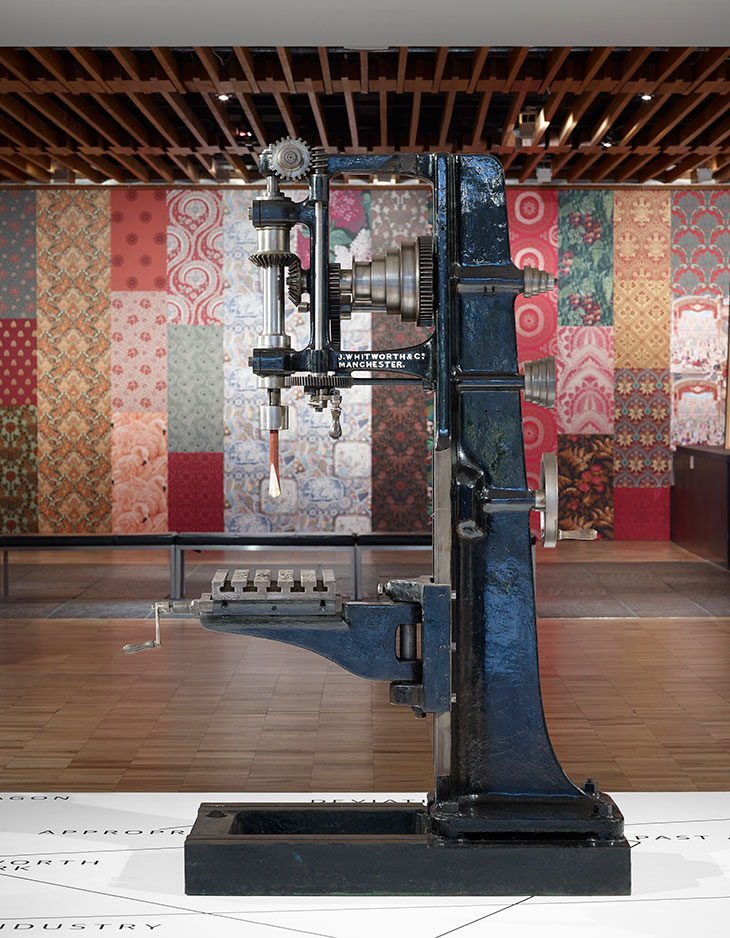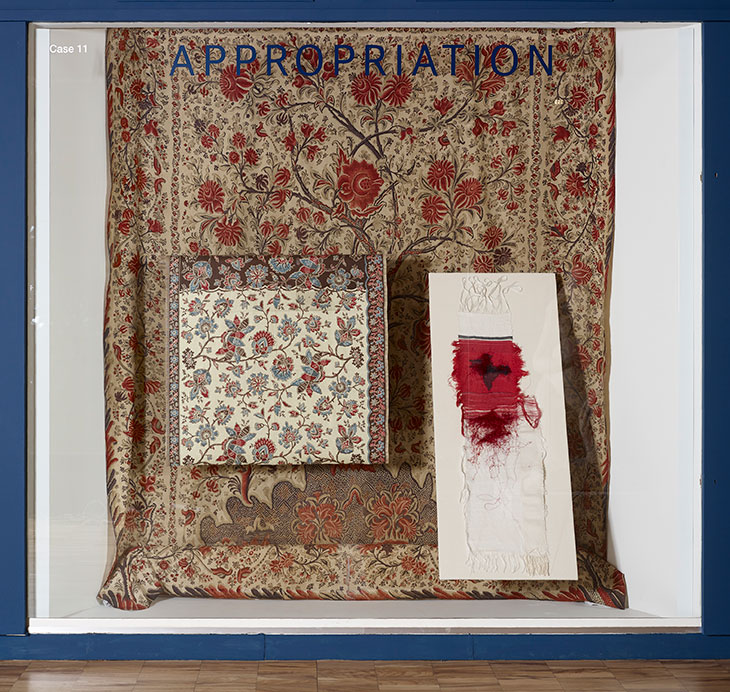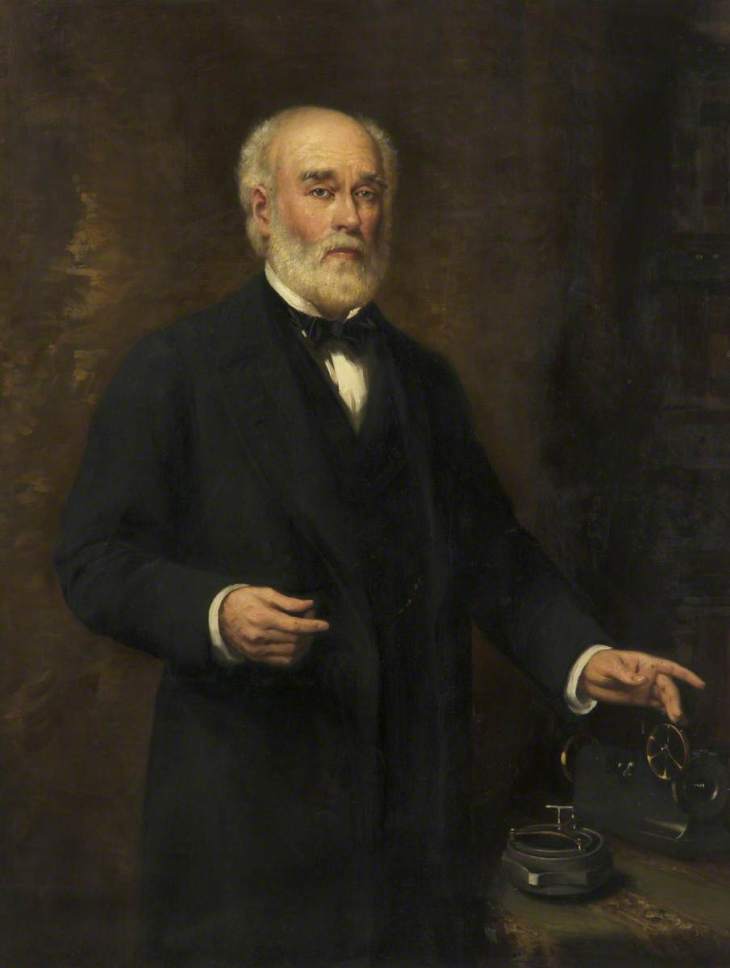Last year marked the 130th anniversary of the Whitworth Art Gallery in Manchester. Extended, refurbished and redisplayed in 2015 – the same year the gallery won Art Fund’s Museum of the Year award – it stages exhibitions rooted in its world-class collections of textiles, wallpapers and watercolours, as well as its ongoing engagement with contemporary artists. With the arrival of new director Alistair Hudson in 2018, the Whitworth has also consciously embarked on a mission to, as the exhibition introduction phrases it, ‘make art useful’.
‘Standardisation and Deviation: The Whitworth Story’ celebrates the fact that the gallery has, in fact, been doing just that for its full 130 years. It crams a lot into a single exhibition space, including the vision of the gallery; the life of Sir Joseph Whitworth, the man in whose memory it was founded; and the history and structure of its collections – all through a narrative split between the opposing concepts of standardisation and deviation.

Installation view of ‘Standardisation and Deviation: The Whitworth Story’ at the Whitworth, Manchester, 2019–20. Photo: Michael Pollard
Whitworth (1803–1887) revolutionised engineering through the introduction of a standardised system of measurement for machine parts. He also devised the first national screw thread standard, which allowed machine parts to be interchangeable, and paved the way for mass production. For the first time, Whitworth’s technical innovations – his pillar drill, fixed-scale gauges, rifle and micrometre – are displayed in this exhibition among the gallery’s collections of art and design, which were brought together thanks to his fortune after his death. His concern with standardisation is contrasted with moments in which the history of the Whitworth and its collections have ‘deviated’ from the norm.
Most significant are the ways the institution has emphasised the dialogue between art and industry – what we might term the fine and mechanical or industrial arts. Indeed, the collection was established to instruct and inspire makers across the spectrum, who shared the same tools and technologies, concerns and contexts. The display examines the notion of repetition, showing how craftsmen have relied on it to produce works – whether in the recurring patterns of wallpaper designs or by copying prints and sculptures for inspiration and education. A dense hang of some of the Whitworth’s earliest acquisitions – a group of watercolours donated in 1892 by John Edward Taylor, owner of the Manchester Guardian – highlights the gallery’s belief that exposure to great art would encourage young engineers to design better.

Installation view of ‘Standardisation and Deviation: The Whitworth Story’ at the Whitworth, Manchester, 2019–20. On the right is Raisa Kabir’s It must be nice to fall in love (2016). Photo: Michael Pollard
The exhibition does a careful job of addressing questions about empire and exploitation. The gallery’s textile collections were intended to inspire the region’s cotton manufacturers and feature exquisite examples. But the textile industry in Manchester was part of a global process that supported the transatlantic slave trade, appropriated foreign cultural heritage and has left a lasting environmental impact. More recent acquisitions such as Raisa Kabir’s It must be nice to fall in love (2016) show how the gallery is working with contemporary artists to articulate these histories. Produced as a result of her residency at the Whitworth in 2015, Kabir’s handwoven piece comments on maps, memory and power, showing the shifting borders of pre- and post-Partition India.
Similarly, sections on ‘Peace’ and ‘War’ tell the story of Sir Joseph Whitworth’s success at the Great Exhibition of 1851 – with his rifle as well as his bench micrometre (used for the accurate measurement of components) – within the context of the Exhibition as an imperial project. Yes, it was intended as a ‘marriage of Art and Industry’, but also as propaganda against the social unrest around industrialisation and the colonial violence exercised outside Europe during a period otherwise known as ‘the Peace of Britain’. The Whitworth Rifle and Ordnance Company was one of many encouraged to develop new technologies for imperial expansion. It therefore seems odd here that the significance of Whitworth’s design of a hexagonal barrel and bullet is reduced to a discussion of the importance of the hexagon in nature, science and cultural symbols.
Rooted in its history of ‘deviance’, the gallery also shares its hopes for the future in this exhibition: its desire to build a ‘conversation between things and people’ and to use art as a tool for social change. The redevelopment in 2015 connected the building’s architecture and the exhibition programme more strongly to both the gallery’s immediate environment of Whitworth Park – itself originally created as a tool for moral, social and political good – and its wider community. ‘Standardisation and Deviation’ does an admirable job of weaving the dialogues and dichotomies of the institution’s past – art and industry, peace and war, instruction and inspiration, collections and community – into a vision for the institution’s future.

Sir Joseph Whitworth (before 1908), Thomas Benjamin Kennington. The Whitworth, University of Manchester
‘Standardisation and Deviation: The Whitworth Story’ is at the Whitworth, Manchester, until June.














![Masterpiece [Re]discovery 2022. Photo: Ben Fisher Photography, courtesy of Masterpiece London](http://zephr.apollo-magazine.com/wp-content/uploads/2022/07/MPL2022_4263.jpg)
‘Like landscape, his objects seem to breathe’: Gordon Baldwin (1932–2025)